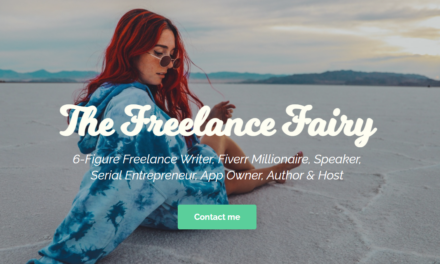Marcus Sheridan believes in bucking a trend, especially when it comes to publicly sharing pricing and rate sheets.
Like his competitors, the owner of River Pools and Spa encountered the same question from customers over and over: “How many arms and legs is a pool gonna cost?”
His competitors wouldn’t divulge a price without first having a conversation with the prospect. As Marcus recounted to The New York Times: “Pool installers are like mattress or car dealers – we hate talking about how much a pool costs until we have you in person because there are so many options and accessories we want to sell you. As a result, pool companies never mention price on their websites.”
Marcus thought differently. As an entrepreneur, he knew if he could provide something his competitors would not, that difference would pique people’s interest. So he wrote his blog post How Much Will My Fiberglass Pool Really Cost? and the article rose to the top of Google for searches on pool prices.
While Marcus didn’t cite an exact figure, the fact that he identified figures at all, including ones for the most popular options, saved his company from the brunt of the 2008 recession.
@TheSalesLion details pricing on his site because that's the most often asked question. His competitors don't. That's his differentiator. #Entrepreneur #ContentTilt Click To TweetAnd yet, more than 10 years later, Marcus’s method remains the exception rather than the rule: Most businesses — especially content creators — remain adamantly opposed to making their prices public.
To be sure, there are plenty of times when posting your prices is a no-brainer. For example, if you sell subscriptions, courses, or merch. But what about when your fees aren’t fixed — sponsored content, sponsored deals, speaking engagements, and consulting gigs? Let’s look at the pros and cons of making your price tags public.
Cons of posting prices
1. Competitive advantage
I don’t want to help my competitors undercut me. If Bob knows I charge $5K for a sponsored content article, then he may well lower his price to $4K – and then cite that difference when wooing a client.
2. Sticker shock
Before presenting a proposal, I want to demonstrate value. Some prospects don’t realize how much time or expertise their project requires, and because I charge a lot, I’m happy to give away a few tips.
Indeed, when the roles are reversed and I’m the buyer, I like to learn why something costs what it does; that helps me justify the purchase. As the seller, I’ve found that providing this free advice is a surefire way to separate myself from my peers. Not only do I deliver the work at hand; I also help my clients understand the decisions I made in the process.
Posting a rate sheet might not the best thing if you want to demonstrate the time or expertise a project takes, says #JonathanRick. #ContentEntrepreneur #CreatorEconomy Click To Tweet3. Bedside manner
I want to see what the prospect will be like to work with. In connecting with someone new, I enjoy the dance of getting to know them. For example: If I ask two questions, do they respond to only one? How quickly do they respond? Is their tone curt or chatty? If they ask for a call, do they provide multiple times they’re available? Do they send over a calendar invite? Do they show up on time? Every signal informs my estimate.
4. Profit maximization
I want to see whether how sensitive the prospect is to price, so I don’t leave money on the table. For example, if their first message mentions money or they say they’re in contact with other creators, I know they’re wary of overspending. By contrast, if they don’t ask about budget until they’ve decided to hire me, I know I can quote a top-of-the-market rate.
Pros of public pricing
Yet the arguments in favor of publicly sharing your pricing are equally compelling:
1. Cheapskates
You weed out prospects who can’t (or won’t) afford your services. There are few things more awkward than when you tell someone the fee is $10K, and they tell you their budget is $1K. Ouch!
2. Browsers
You identify tire kickers and freebie fishers. This cohort can be equally exasperating. For one thing, they rarely divulge their status. For another thing, browsers rarely turn into buyers. Finally, transactions here are lopsided: They’re eager for your expertise, but reluctant to pay for it.
Publicly posted pricing dissuades kickers and freebie fishers from wasting your time, says #JonathanRick. #ContentCreators #CreatorEconomy Click To Tweet3. Simplification
You simplify your content business operations. Let’s face it: Trying to suss out a buyer’s wherewithal is a pain. And keeping track of different quotes for different services for different companies? That only twists these knots tighter. As anyone who has attempted to sustain a lie knows, over the long run, it’s much easier to tell everyone the truth.
Similarly, a rate card also simplifies things for your prospects. Sometimes, people just want the bottom line, not because they’re not cheap, but because they’re busy. As freelancer Maddy Osman points out, “The easier you make yourself to hire, the more likely you are to be hired!”
4. Focus
While sales is part and parcel of a content business, making your prices public lets you focus less on developing clients and more on why you became a creator in the first place: To develop content.
5. Ranges
Still doubtful? Instead of providing fixed fees, offer ranges for each service. If you have a minimum threshold to do a deal, specify that. Your goal is to establish general expectations; precision comes later.
6. Goodwill
The final benefit is perhaps the biggest – and the one that Marcus Sheridan champions: People appreciate transparency. By being upfront with someone, you immediately create trust. And if someone trusts you, he’ll likely do business with you.
What’s the better choice?
Which pricing-communication model is better? The assembly line (i.e., sharing publicly) or the bespoke suit (i.e., customizing each deal)? The answer depends on your business.
If your rates are relatively low or based only on your audience numbers, then it makes sense to go forth and publish your prices. What you might lose in profit margins, you’ll conceivably make up in volume.
By contrast, if your rates are higher or your deals more complex, then it makes sense to protect your proprietary information and guide prospects to a one-on-one conversation.
Which approach do I favor? Before writing this article, I was adamantly opposed to sharing a rate sheet. In fact, I didn’t even want to offer a range. On my website, I explained:
“Let’s say I quote a ran$50 to $100. Well, most people focus on the $50. Some people assume $75. But no one thinks $100. As a result, if the actual cost is anything above $75, you feel you’re getting squeezed. That said, I know price is important, so here’s what I can tell you: Wikipedia work is expensive. It requires specialized expertise and is an investment in your digital reputation.”
This answer has always felt like I protested too much: Even as I was apologizing for being cagey, I was trying to persuade the reader to appreciate that caginess.
Now that I’ve researched the issue, I feel differently. Though I’m not quite ready to publicize my prices, I am ready to let them out from under lock and key. In other words, if someone asks me for an estimate, I’ll go ahead and give it to them. I may sacrifice a few bucks, but I’ll gain the most precious asset of all: time.
About the author
Jonathan Rick is a freelance ghostwriter who specializes in thought leadership. Need help with a Wikipedia page? How about a slide deck or op-ed? Send him an email: hi@jonathanrick.com.










